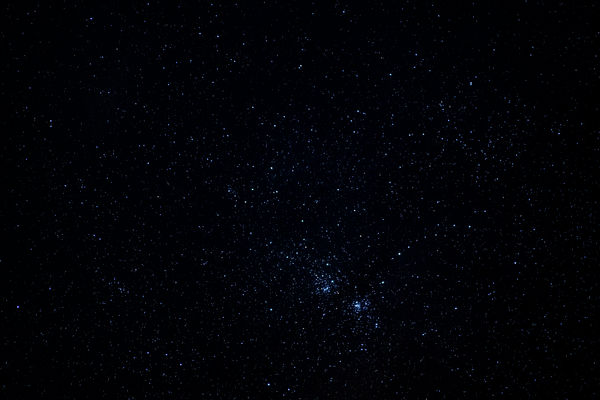Some standard tests to compare lenses
Oct 10, 2015 06:55:26 #
I have three lenses I want to compare. They are all telephoto zoom all purpose lenses that I use on a Nikon D7100. I only want to keep one. I won't say which lenses because I am tired of reading about comparisons and have already spent a good bit of time on dpreview. I want to see the differences for myself (maybe I am a control freak!!!).
I can think of tons of shots to set up to compare them but I don't want to spend the next week doing this. What are some standard or lets say "most important types of comparison shots" I should do.
1)Currently, I plan on doing a landscape shot at wide angle and zoom positions on all three at f/8 or so (sweet spot) to compare the best they can do. Then try some high and low f values.
2)The more expensive lens has a shorter reach than the other two so I was going to crop that in post to see how it compares.
3)Low light performance. I have already checked the ability to auto-focus in low light and all three are about the same (even the cheap one) which leads me to believe the D7100 is more important here. I do want to check how the photo's appear though.
4) Some low f value shots to compare Bokeh. Also bokeh on some zoomed shots at highest mm
Any other suggestions or tweaks to the above tests??
I can think of tons of shots to set up to compare them but I don't want to spend the next week doing this. What are some standard or lets say "most important types of comparison shots" I should do.
1)Currently, I plan on doing a landscape shot at wide angle and zoom positions on all three at f/8 or so (sweet spot) to compare the best they can do. Then try some high and low f values.
2)The more expensive lens has a shorter reach than the other two so I was going to crop that in post to see how it compares.
3)Low light performance. I have already checked the ability to auto-focus in low light and all three are about the same (even the cheap one) which leads me to believe the D7100 is more important here. I do want to check how the photo's appear though.
4) Some low f value shots to compare Bokeh. Also bokeh on some zoomed shots at highest mm
Any other suggestions or tweaks to the above tests??
Oct 10, 2015 07:07:16 #
Revet wrote:
I have three lenses I want to compare. They are all telephoto zoom all purpose lenses that I use on a Nikon D7100. I only want to keep one.
It's easier said than done, at least according to my experience. Professionals who test and compare lenses have the time, the equipment, and the experience to do it right. Look online for comparisons. Matt Granger has good tests on YouTube. Here are some others.
http://www.dpreview.com/products/compare/lenses
http://lenshero.com/lens-comparison
http://www.the-digital-picture.com/Reviews/ISO-12233-Sample-Crops.aspx
http://www.lenstip.com/lenses.html
http://www.dxomark.com/Lenses/Compare
As for the "sweet spot," are you sure f/8 is the best aperture for each lens? Cropping is going to throw the comparison way off.
Oct 10, 2015 09:04:56 #
In your case just flip a coin it won't matter ?.
Revet wrote:
I have three lenses I want to compare. They are a... (show quote)
Oct 10, 2015 11:20:33 #
Revet wrote:
I have three lenses I want to compare. They are a... (show quote)
I like to shoot images of stars. And I find that star images tell me a lot about the capability of the lens. You want to shoot wide open with an ISO high enough to capture a decent amount of stars in a couple sec shot. You will need to carefully manual focus and to use a tripod and use manual exposure. Some cameras are easier than others to manual focus.
What to look for. Stars are pin point light sources, and can immediately show you how good or how bad a lens is.
1. Are the stars round points in both the center, and at the edges? If the lens suffers from coma distortion, the edge stars will stretch and distort badly. A good lens will retain the point look from edge to edge.
2. If you have bright stars in the image, how do they look? You want them to be nice points of light. A not so good lens will bloom and look terrible.
3. If you have a chromatic aberation problem, you will see purple halos around the bright stars.
Again, I want to emphasize that focus needs to be perfect. If off just a tiny amount, the stars will grow fat and not make this test usable.
If a lens looks good with this test, it will look good with other types of images too. I have perhaps 30 lenses. Perhaps only 5 or 6 pass the star test, and they look good no matter what I image.
Oct 10, 2015 15:36:02 #
Oct 11, 2015 07:14:23 #
Very Helpful Jim, that is exactly what I was looking for!!! I will add that to my testing tonight.
Oct 11, 2015 08:00:19 #
Also check them for front/back focusing. Because of manufacturing tolerances sometimes you will get a camera/lens combination that will front or back focus. The D7100 has AF fine tuning but AF fine tuning adjustments should be small. If you have to make large adjustments like 10, 15, 20 units that's really too much. Nikon says that large AF fine tuning adjustments can interfere with the focusing ability of the camera. I use the DataColor SpyderLensCal for that.
Oct 11, 2015 08:23:27 #
billnikon
Loc: Pennsylvania/Ohio/Florida/Maui/Oregon/Vermont
RichardSM wrote:
In your case just flip a coin it won't matter ?.
:thumbup: :thumbup:
Oct 11, 2015 09:59:47 #
Revet wrote:
I have three lenses I want to compare. They are a... (show quote)
People seem to be obsessed with resolution, which IMHO is really pretty good with almost all modern lenses. I would just take some high contrast and low contrast shots and look at them. Things like flare and chromatic aberration are more important than just resolution or bokeh. Another thing is distortion barrel and pincushion especially with landscapes and architecture. and perhaps MOST important is how it feels in your hands on the camera.
Oct 11, 2015 10:11:04 #
CO wrote:
Also check them for front/back focusing. Because of manufacturing tolerances sometimes you will get a camera/lens combination that will front or back focus. The D7100 has AF fine tuning but AF fine tuning adjustments should be small. If you have to make large adjustments like 10, 15, 20 units that's really too much. Nikon says that large AF fine tuning adjustments can interfere with the focusing ability of the camera. I use the DataColor SpyderLensCal for that.
I googled that
http://spyder.datacolor.com/wp-content/uploads/2012/07/SpyderLensCal_UserGuide_English.pdf
This is the english manual for that product. I think this has possibilities for creating a similar rig as it is essentially a vertical target with a ruler at 45 degrees it seems. I have a lot of manual lenses and i think this would help me determine sharpness maybe CA for a particular lens and maybe how dodgy my eye sight is.
I think most of my lenses are a bit soft, but something like this might help me figure out which are sharpest and which should be replaced with something better.
Oct 11, 2015 10:30:09 #
Revet wrote:
Very Helpful Jim, that is exactly what I was looking for!!! I will add that to my testing tonight.
As an example, here is a 13 sec shot of the Double Cluster taken last night with a Tamron 70-200 F2.8 lens and shot at 200mm f2.8 in manual mode with an APS-C type sensor, so it was equivalent to 300mm. ISO was set to 1250 and white balance to incandescent light. This test was done with an iOptron tracker which was turning the camera to match the earth's rotation. Without it, you will need to cut back on the number of seconds and possibly raise the ISO.
This is a very excellent lens and you can see how sharp the stars are both in the center and in the corners. There is no coma distortion which would be very noticeable with a lower quality lens. And there is very little blooming on bright stars and you have to really magnify to see it. The image was processed in DxO Optics for noise and adjusted to emphasize the stars and reduce the darkness of the background. If your lens can produce similar results, it is likely to be good at everything.
Oct 11, 2015 12:05:54 #
I would lean to a subject that has well defined lines, angles and shapes. This would enabled detection of distortion. Precision ruled graph paper could work but probably not with telephotos. Some digitals provide for grid lines in the view finders.
Oct 11, 2015 12:12:27 #
John_F wrote:
I would lean to a subject that has well defined lines, angles and shapes. This would enabled detection of distortion. Precision ruled graph paper could work but probably not with telephotos. Some digitals provide for grid lines in the view finders.
just set up a rig on my table, with a 60cm aluminum rule at 45 degrees running front to back and a test image mounted vertically about half way along the ruler.
with my camera mounted on a tripod and a 2 second delay, my camera is pretty much spot on with its focus confirmation. But with the lens i'm using seeming a bit soft.
Hopefully i will be able to run through them all and rate them against each other, it may spark buying new lenses, although i'm also fighting my vision too.
Oct 11, 2015 12:38:01 #
The manufacturer has already done all of that comparison for you!
Just look at the MTF chart for each lens, especially if they are of the same brand.
You're not a control freak, you just have too much disposable time and reinventing the wheel burns up tons of time!! :lol:
SS
Just look at the MTF chart for each lens, especially if they are of the same brand.
You're not a control freak, you just have too much disposable time and reinventing the wheel burns up tons of time!! :lol:
SS
Oct 11, 2015 12:43:28 #
Mark7829
Loc: Calfornia
Revet wrote:
I have three lenses I want to compare. They are a... (show quote)
I think you could do more research. And as others have indicated there're professional sites that have done this work. I would pay lose attention to the optics, coatings, (these coatings reduce flares as they increase saturation and contrast), aberration, distortion, vignetting, sharpness from edge to edge, construction materials, internal vs external zoom (externals tend to creep), AF response as well as motors, IS/VR, aperture blades (numbers, rounded or square, the more (9) and rounded are better for Bokeh), elements and groups, metal mounts vs plastic, weather sealing, manual focus on the fly, etc. The worse thing you could so, IMO, is just make a side by side comparison of images on an LCD and/or follow the advice of some one who says, "I works for me".
If you want to reply, then register here. Registration is free and your account is created instantly, so you can post right away.









